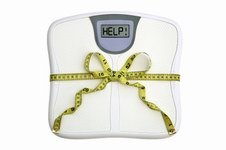Waist measurement, more than any other, including weight, is the most relevant basic body measurement indicator of heart disease risk.
Even if you’re not overweight, a bigger waist brings greater risk. Irrespective of height, 40 inches (101 cm) for men and 35 inches (89cm) for women are what we should aim to beat, and each successive inch lost is simply that much better as a risk reduction. The smaller the waist, the lower the level of atherosclerosis – which lead to clogged arteries, for instance. Simple as that! Weight alone is not a good predictor, but waist, or waist-to-hip ratio, (very similar) is. BMI (Body Mass Index) is not very good because it doesn’t say how much mass is muscle, and where the fat is located.
This information arose from a study done by the University of Texas Southwestern Medical Center, and published recently in the Journal of the American College of Cardiology.
Fat around the waist is more metabolically active – it has greater interaction with nearby organs particularly the liver, than other fat – and thus has negative influences, including inflammatory effects, that cause heart disease. Go over that 40 inches (and 35 for women) and your heart attack risk increases. Getting it below those levels is all the better too, and though there are no precise indicators, there is a simple rule – the smaller the waist measurement, the better.
The good news is that waistline fat is, for most people, the most easily removed fat, through diet and exercise.
Surely of more importance, then, is the following:
A study shows exercise is the most influential factor in heart disease risk with post-menopausal women, and the same conclusions are widely held for men.
More than any other behavioural or health indicator – even weight – apart from smoking and very high levels of LDL cholesterol, exercise makes the clearest difference to women’s risk of heart attack. (Looked at another way, poor cardiovascular fitness is the major risk factor). In a major study conducted by the Pennington Biomedical Research Center at Louisiana State University, those who exercised for 75 minutes showed major reductions in risk compared with non exercisers, those who did 136 minutes had major similar benefits, and the reduction in relative gain only started to drop off after 192 minutes a week, but there nevertheless gains beyond that. Given that one in two women dies of cardiac disease this is an important message.
As we age we naturally lose 1%-2% of cardiovascular fitness per year. With 75 minutes of exercise a week we can arrest that loss, and with 150% we can reverse it and reclaim it…and the gains continue past 190 minutes a week, then taper off in relative terms, though there is still net gain for each extra bit of activity.
The exercise referred to in the study was merely brisk – and not particularly brisk – walking, technically referred to as about 50% of VO2 Max, or half a person’s highest possible exercise capacity.
Similar studies from the same source indicate that exercise is so important that even quite obese people show better cardiac fitness than people with normal or ideal-zone weights – and we’re talking about men and women.
This indicates that it is just as important for those with diabetes and high cholesterol levels to have exercise at the top of their health lists, and that just everyone would be wise to put exercise ahead of everything – with only one critical warning: watch out for injury – don’t overdo it; increase intensity and duration gradually. The authors point out that knee and hip injury, overuse and form problems – particularly with age – can potentially ruin all performance.
This is a link to an interesting video on the topic (Journal of American Medical Association) copy this link into your browser: http://tinyurl.com/39l569
Courtesy of www.fitnessandleisure.co.nz









Join the Discussion
Type out your comment here:
You must be logged in to post a comment.